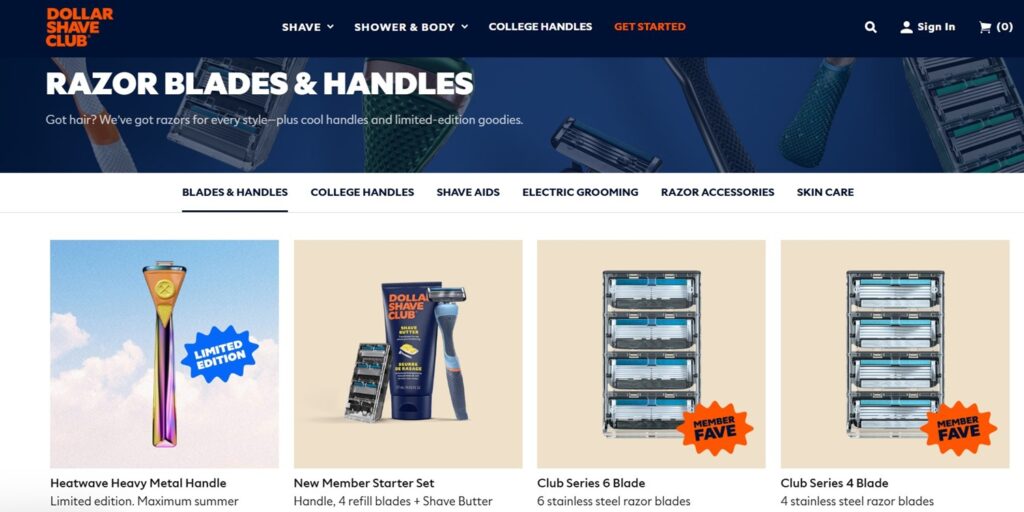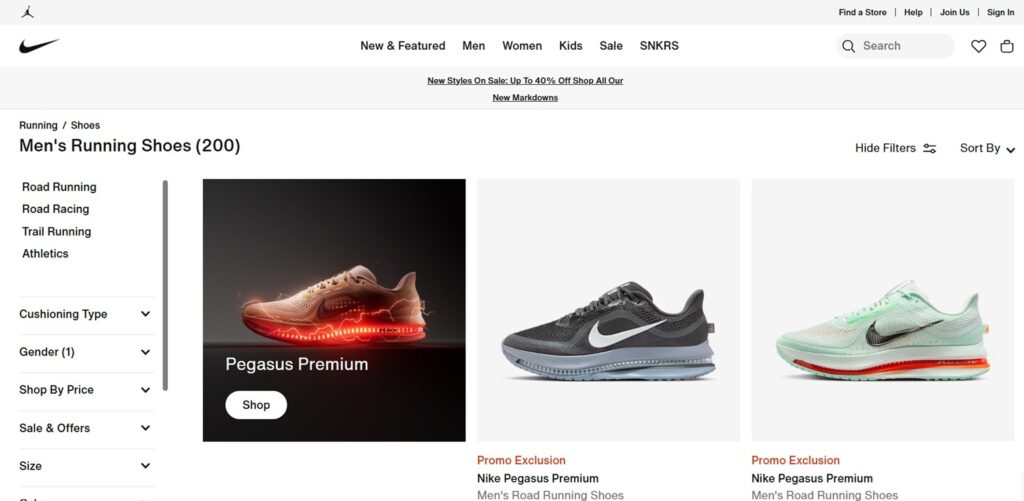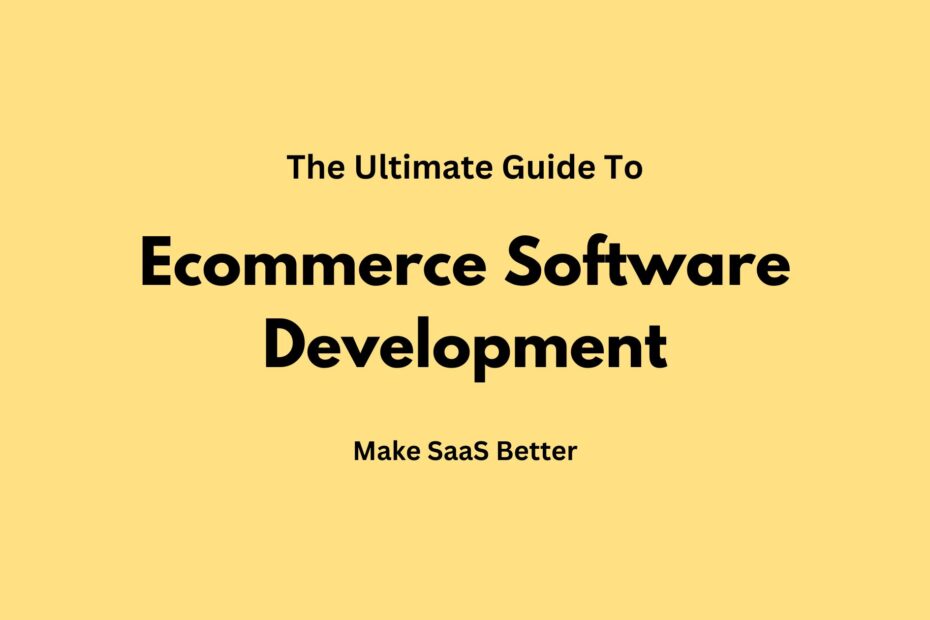Let’s be honest. In 2025, if your ecommerce site still feels like it’s stuck in 2015, you’re losing sales faster than you can say “abandoned cart.” The market keeps evolving, and so do the tools and tech behind top-performing online stores.
But building (or rebuilding) your ecommerce platform isn’t just about picking a template and running wild. It’s about smart development—tailoring solutions that actually move the needle for your business.
Whether you’re a DTC upstart or a retail giant, this guide will help you understand ecommerce software development in plain English. We’ll break down what matters, what it costs, and how to make decisions that pay off.
Ready? Let’s talk code, conversions, and everything in between.
What Is Ecommerce Software Development?
Ecommerce software development is the process of designing, building, and maintaining digital platforms that let businesses sell goods or services online. It covers everything from the shopping cart to the payment gateway, and from mobile apps to custom admin dashboards.
In 2025, ecommerce platforms aren’t just about listing products. They’re about creating seamless experiences, integrating with dozens of tools, and supporting growth across multiple channels. The right development approach can help you stand out, scale up, and keep customers coming back.
Core Types of Ecommerce Software
Custom Ecommerce Platforms
Custom platforms are built from scratch, tailored to a business’s unique needs. You control every feature, every pixel, and every integration. While this path is more expensive and takes longer, it’s the go-to choice for brands with complex workflows or ambitious scaling plans.
Example – Dollar Shave Club

Open-Source Solutions
Open-source ecommerce software like Magento or WooCommerce gives you a solid base to start from, plus the flexibility to modify code. You’ll need developers on hand, but you own the platform and can shape it as you wish. Just remember: with great power comes a longer bug list.
Example – Robert August – Built with WooCommerce

Headless Ecommerce
Headless ecommerce separates the front end (what users see) from the back end (where data lives). This makes it easier to deliver fast, personalized experiences across web, mobile, and even smart devices. It’s hot in 2025 for brands chasing lightning-fast sites and unique customer journeys.
Example – Nike

SaaS Ecommerce Platforms
SaaS (Software as a Service) platforms like Shopify and BigCommerce let you launch quickly without worrying about servers or updates. You pay a subscription and get a bundle of features. Customization is limited, but for many stores, it’s fast, simple, and secure.
Example – Gymshark

Marketplace Software
Marketplace software powers platforms where multiple vendors sell under one roof—think Amazon or Etsy. Building a marketplace means handling different seller profiles, commission rules, and tons of moving parts. If you’re dreaming big, this is your playground.
Must-Have Features for Ecommerce Software in 2025
Mobile-First Design
Most online shopping happens on phones in 2025. Your site or app needs to be fast, responsive, and easy to use on any device. Mobile-first design isn’t just a nice-to-have—it’s the baseline for customer trust and higher conversion rates.
Flexible Product Catalogs
Whether you sell 10 items or 100,000, your platform should handle complex catalogs with categories, variants, and filters. Customers expect to find what they want in seconds, not minutes. Smart catalog management keeps your inventory clean and your shoppers happy.
Personalized Shopping Experiences
Shoppers want recommendations that make sense and offers that feel relevant. Today’s ecommerce software uses AI and data to personalize everything—from product suggestions to email follow-ups. The more tailored the experience, the better your sales numbers.
Robust Search & Filtering
Great search is a silent sales machine. If customers can’t quickly find what they’re looking for, they’ll leave. Invest in fast, typo-tolerant search and flexible filters. Bonus points if your search learns from user behavior over time.
Multiple Payment Options
The more ways you let customers pay, the fewer carts get abandoned. Support credit cards, digital wallets, buy-now-pay-later, and even crypto if your audience demands it. Secure, frictionless payments are a must in 2025.
Integrated Shipping & Fulfillment
Customers expect real-time shipping rates, tracking, and flexible delivery options. Your ecommerce software should connect with major carriers and third-party logistics providers. Automated shipping rules save time and reduce mistakes.
Advanced Security & Compliance
Shoppers trust you with their data. Your platform needs end-to-end encryption, regular security updates, and compliance with privacy laws like GDPR and CCPA. A single breach can sink a brand’s reputation overnight.
Analytics & Reporting
You can’t grow what you can’t measure. Built-in analytics help you track everything—sales, traffic, customer behavior, and more. Look for customizable dashboards and integrations with your favorite BI tools.
Omnichannel Capabilities
In 2025, ecommerce isn’t just about your website. Customers shop via social media, marketplaces, and even voice assistants. Your software should support selling everywhere your audience hangs out, with inventory and orders always in sync.
The Ecommerce Software Development Process
Step 1 – Discovery & Planning
Every great project starts with a clear roadmap. This phase is about defining business goals, user personas, and technical requirements. The more you clarify up front, the fewer surprises (and headaches) down the road.
Step 2 – Design & Prototyping
Here’s where you sketch out how your store will look and feel. Designers create wireframes and clickable prototypes so you can test ideas before writing a single line of code. Good design is about more than looks—it’s about guiding users to purchase.
Step 3 – Development & Integration
Now the coding begins. Developers bring your store to life, building both the front end and back end. This is also when integrations with payment gateways, shipping APIs, and other tools happen. Regular check-ins keep the project on track.
Step 4 – Testing & Quality Assurance
No one likes buggy ecommerce sites. QA teams test everything—checkout flows, mobile layouts, speed, and security. Automated tests catch issues early, while real-user testing ensures a smooth experience for everyone.
Step 5 – Launch & Deployment
Ready to go live? This phase covers final data imports, server setup, and DNS changes. Expect a checklist longer than your holiday wish list. Soft launches or beta tests help catch last-minute issues before the big reveal.
Step 6 – Post-Launch Support & Maintenance
Going live is just the beginning. Ongoing support means fixing bugs, rolling out new features, and keeping your store secure. Regular updates and performance checks help you stay ahead of customer expectations—and competitors.
Custom vs. Off-the-Shelf Ecommerce Software
When to Go Custom
Custom development makes sense if your business model is unique, your workflows are complex, or you need features no one else offers. It’s a bigger investment, but you get total control and a platform that matches your vision perfectly.
When Off-the-Shelf Works
If your needs are straightforward—standard catalog, simple checkout, basic integrations—off-the-shelf SaaS or open-source solutions are usually faster and cheaper. You’ll get updates and support without the headaches of custom code.
Hybrid Approaches
Many brands in 2025 mix and match—using SaaS for the basics, then layering on custom apps or integrations where it counts. This lets you launch quickly while still building unique experiences as you grow.
How Much Does Ecommerce Software Development Cost?
Factors That Affect Pricing
Costs depend on your platform choice, feature set, design needs, and integration complexity. Custom builds are pricier than SaaS subscriptions. Ongoing support, hosting, and updates also add to the total bill.
Typical Price Ranges
In 2025, a basic custom ecommerce site might start around $30,000–$50,000. More complex builds—think marketplaces or headless setups—can run $100,000 and up. SaaS platforms often charge $29 to $299 per month, plus transaction fees.
Hidden Costs to Watch
Don’t forget about content creation, SEO, data migration, and staff training. These often get overlooked in the planning phase but can impact your total investment. Plan for growth, not just launch.
Choosing the Right Ecommerce Development Partner
What to Look For
Experience counts. Look for teams who’ve built similar platforms and can show real results. Ask about their process, communication style, and post-launch support. A good partner should be invested in your long-term success, not just the build.
Evaluating Portfolios
Review case studies and live sites. Test their work on mobile and desktop. Look for speed, usability, and features that match your vision. Don’t be shy about asking for references or speaking to past clients.
Questions to Ask
Ask about their tech stack, project management tools, and approach to security. How do they handle scope changes? What’s their policy on bug fixes and updates? The more you know up front, the smoother your project will run.
Best Practices for Ecommerce Software Development in 2025
Prioritize Performance
Speed sells. Fast-loading pages reduce bounce rates and increase conversions. Compress images, use smart caching, and trim unnecessary scripts. In 2025, slow sites are invisible sites.
Design for Accessibility
Accessible stores reach more customers and avoid legal headaches. Use proper contrast, alt text, and keyboard navigation. Accessibility isn’t just a checkbox—it’s good business.
Automate Where Possible
Save time and reduce errors by automating inventory updates, order tracking, and customer emails. The right automations free up your team to focus on growth, not grunt work.
Continuous Improvement
Launch is just the start. Use analytics and user feedback to refine your store. Small tweaks—like improving search or streamlining checkout—can drive big gains over time.
Stay Secure
Update software regularly, use strong passwords, and monitor for threats. Security is an ongoing process, not a one-time task. Protecting your data protects your brand.
Key Trends in Ecommerce Software Development for 2025
AI-Powered Personalization
AI is everywhere in ecommerce this year. Platforms use machine learning for smarter product recommendations, dynamic pricing, and even chatbots that actually help. Brands using AI see higher engagement and bigger average order values.
Voice Commerce & Conversational Shopping
More shoppers are buying via smart speakers and voice assistants. Ecommerce software now supports natural language search, voice-activated carts, and conversational checkouts. Early adopters are seeing higher conversion rates from these channels.
Augmented Reality Shopping
AR lets customers see products in their space before buying—think trying on glasses or placing furniture in a room. In 2025, AR features are a key differentiator for brands in fashion, home goods, and beauty.
Green Commerce & Sustainability
Shoppers care about sustainability. Ecommerce platforms now include features like carbon offset calculators, eco-friendly packaging options, and transparent supply chain tracking. Brands that highlight these features build deeper trust.
Global Expansion Tools
Reaching customers worldwide is easier than ever. Modern ecommerce software handles multiple currencies, languages, and tax rules. Brands can launch in new markets with fewer headaches and more confidence.
Common Pitfalls to Avoid
- Overcomplicating the User Experience – Too many features can slow down your site and confuse shoppers. Focus on what your customers really need. Streamlined, intuitive interfaces win every time.
- Ignoring Mobile Users – Mobile traffic dominates in 2025. If your site isn’t flawless on phones, you’re leaving money on the table. Test every feature on mobile before launch.
- Neglecting SEO Fundamentals – Even the best-looking store needs strong SEO. Use clean URLs, fast load times, and schema markup. Regularly update your content and check for technical issues.
- Underestimating Maintenance – Software isn’t set-and-forget. Plan for regular updates, backups, and bug fixes. A little ongoing care keeps your store running smoothly and securely.
- Skipping User Testing – Your team isn’t your target audience. Test with real shoppers to catch confusing flows or broken features. Early feedback saves time and money down the road.
Essential Metrics to Track for Ecommerce Success
Conversion Rate
This tells you how many visitors buy something. A small increase here can mean a big jump in revenue. Track conversion rates by device, channel, and campaign.
Average Order Value (AOV)
AOV shows how much customers spend on each purchase. Use upsells, bundles, and free shipping thresholds to boost this number. Higher AOV means more revenue without more traffic.
Customer Lifetime Value (CLV)
CLV predicts how much a customer will spend over their lifetime. Loyal customers are worth more, so invest in retention, loyalty programs, and personalized offers.
Cart Abandonment Rate
This metric highlights leaks in your checkout flow. Simplify forms, add trust signals, and send smart follow-ups to recover lost sales. Every recovered cart is money in the bank.
Site Speed & Uptime
Slow or unreliable sites lose sales. Monitor load times and uptime around the clock. Fast, stable sites keep customers—and search engines—happy.
Building Ecommerce Software for the Future
Ecommerce software development isn’t a one-time project—it’s an ongoing process. The best brands in 2025 treat their platforms as living, breathing assets. They invest in performance, security, and customer experience year-round.
Whether you’re starting from scratch or upgrading your stack, focus on what matters: fast load times, seamless checkouts, and features your customers actually want. Partner with developers who get your business, not just your tech list.
And remember, the right ecommerce software is the one that helps you sell more, serve better, and sleep easier at night. If you’re ready to build a store that stands out in 2025, start with smart planning—and maybe a little coffee.
Still have questions or need help mapping out your ecommerce project? Drop your thoughts in the comments below. Let’s make your next launch your best one yet.
